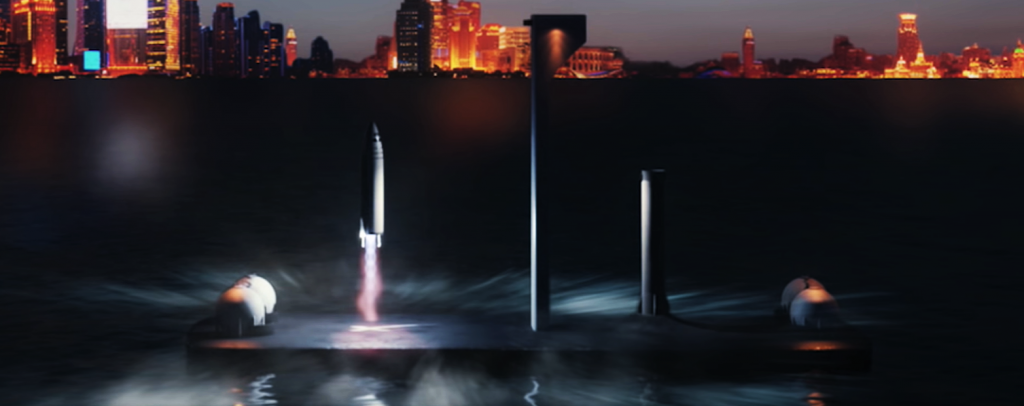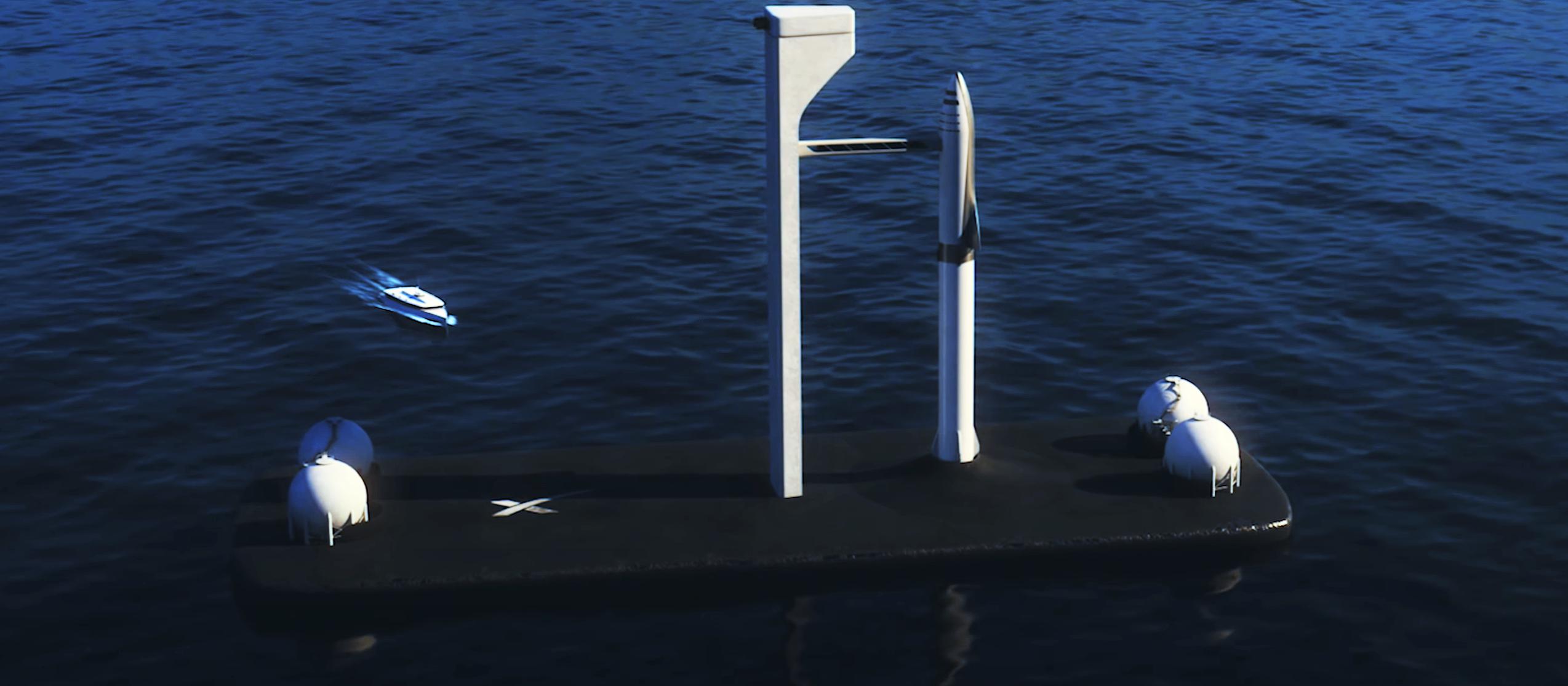SpaceX CEO Elon Musk says that the company is going to build multiple massive “floating spaceports” to enable Starship launches to Mars and the Moon, as well as point-to-point travel around the Earth.
First confirmed in job listings and later backed up by Musk himself, the goal of the nascent program is “to design and build an operational offshore rocket launch facility” sized for Starship and Super Heavy. Given that SpaceX’s next-generation, fully-reusable rocket will be the most powerful rocket ever built when it flies, designing and building a fully mobile launch and landing facility is going to be no small task.
To realize that ambition, SpaceX will have to find a way to efficiently pack propellant, fueling, and pressurization systems; a potentially skyscraper-sized launch tower and crane; one or two landing pads and a launch mount; crew quarters, propulsion, major power supplies, and much, much more onto a very large ship.

In typical SpaceX fashion (also unsurprising given the sheer list of requirements and lack of obvious off-the-shelf options), two “Offshore Operations Engineer” job listings published earlier today also implied that even the pad’s ship or platform base could be built in-house. That base will have to be massive. It’s not clear if the floating spaceports Musk is proposing would be fixed or if they would follow in the much smaller footsteps of SpaceX’s current booster recovery drone ships.
Based on concepts published by the company in 2017, it can be determined that Starship’s floating launch facilities will likely measure at least 300m (1000 ft) long and ~100m (330 ft) wide and displace several tens of thousands of tons. For reference, such a platform would be more than ten times larger than SpaceX’s football-field-sized drone ships and even substantially larger than the average American city block.
Regarding weight, it’s safe to say that SpaceX would want its floating launch facilities – likely tens or hundreds of miles offshore – to have the capacity to support multiple Starship launches without resupply. For orbital launches, that would mean 10,000-20,000 tons (22 to 44 million lb) of propellant storage to support 2-4 launches between resupplies, requiring possibly the largest cryogenic liquid storage spheres ever built for spaceflight. If mobile, the platform would likely need to weigh many tens of thousands of tons more to ensure stability even when fully empty, while a fixed platform would have less stringent requirements at the cost of much less mobility.
It remains to be seen when SpaceX plans to start actually building the first of a potential fleet of city-block-sized floating launch platforms. Musk recently said that the company is pursuing both sea-based and land-based launch facilities in Boca Chica, Texas and Kennedy Space Center, Florida (plus the ocean), so things are still undecided. Regardless, hiring engineers is a strong sign that SpaceX really is seriously pursuing all three options.
Check out Teslarati’s newsletters for prompt updates, on-the-ground perspectives, and unique glimpses of SpaceX’s rocket launch and recovery processes.











